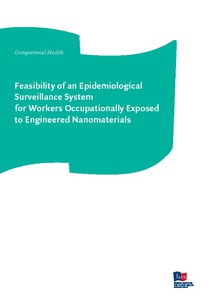Feasibility of an epidemiological surveillance system for workers occupationally exposed to engineered nanomaterials
"Alerted by the possible impact of nanomaterials exposure on human health, the French Ministries of Health and of Labour asked the French Institute for Public Health Surveillance (InVS), supported by a multidisciplinary working group convened by the IReSp, to assess the feasibility of an epidem...
| Main Authors: | , |
|---|---|
| Institution: | ETUI-European Trade Union Institute |
| Format: | TEXT |
| Language: | English |
| Published: |
Saint-Maurice
2012
INVS |
| Subjects: | |
| Online Access: | https://www.labourline.org/KENTIKA-19133916124919511989-Feasibility-of-an-epidemiologi.htm |
| Summary: | "Alerted by the possible impact of nanomaterials exposure on human health, the French Ministries of Health and of Labour asked the French Institute for Public Health Surveillance (InVS), supported by a multidisciplinary working group convened by the IReSp, to assess the feasibility of an epidemiological surveillance system of workers likely to be exposed to engineered nanomaterials. In response to this request, this report makes an inventory of the numerous uncertainties inherent to this field such as the question of definition, the wide range of nanomaterials, the identification of health events that could be monitored, the registration and collaboration of companies and workers likely to be concerned by nanomaterials and the metrological issues. After having reviewed the different epidemiological design that could be suitable for the surveillance of possible long term health effects, the InVS suggests the implementation of a double surveillance system with a prospective cohort study, on one hand, and repeated cross-sectional studies, on the other hand. Repeated cross-sectional studies would include all kinds of nanomaterials while the cohort study would focus on a few ones. It is time to initiate the prospective cohort study by the registration of workers likely to be exposed to nanomaterials. In conclusion, the report gives some recommendations for epidemiological research." |
|---|---|
| Physical Description: | 75 p. Digital |

